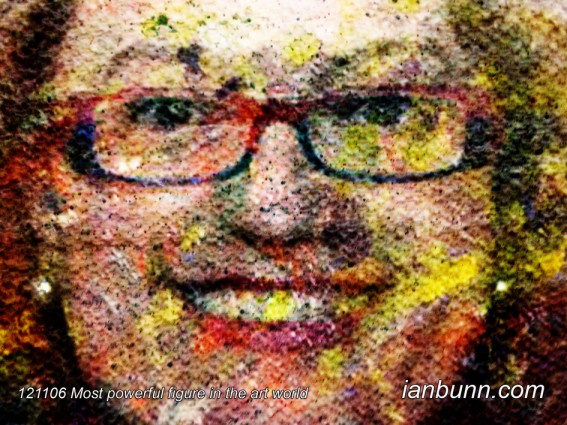 Most powerful figure in the art world (November 6 2012)
Most powerful figure in the art world (November 6 2012)
Carolyn Christov-Bakargiev the 54 year old American Art historian and curator has been listed by ArtReview as the number one world ‘mover and shaker’ in its Power 100 list, the first time the position has been occupied by a female. Christov-Bakargiev was the Artistic Director of the current year’s dOCUTMENTA 13 exhibition in Kassel, regarded generally as an outstanding exhibition with record setting attendances. Coline Milliard for an Blouin Artinfo article states “globe-trotting curator Carolyn Christov-Bakargiev is the most powerful figure in the art world, according to ArtReview’s Power 100 list. In this much-awaited Who’s Who — published yearly by the veteran art magazine for more than ten years… That it has taken over a decade for ArtReview’s Power 100 to have a female number one might well be indicative of a lingering gender inequality in the visual arts. And to get there, Christov-Barkargiev has had to pull out the big guns. Her critically acclaimed dOCUMENTA(13) … was the most popular dOCUMENTA ever. 860,000 people saw her show in Kassel, and an extra 27,000 visited the Kabul outpost (in total almost twice as much as the number of visitors at the last Venice Biennale). …The Power 100 jury is undisclosed but it is said to be composed of twenty members from different parts of the world, including staff from ArtReview’s editorial team. Shortlisted high-flyers were considered for their activity between September 2011 and September 2012. The criteria – “local and international influence” and “impact” — are almost as nebulous as the concept of power they are supposed to pinpoint. Yet few art professionals would deny that ArtReview’s 2012 Power 100 feels like a credible snapshot of the art world in the last twelve months.”
Inspired by Coline Milliard ow.ly/eU7PC image source Facebook ow.ly/eU7NN

